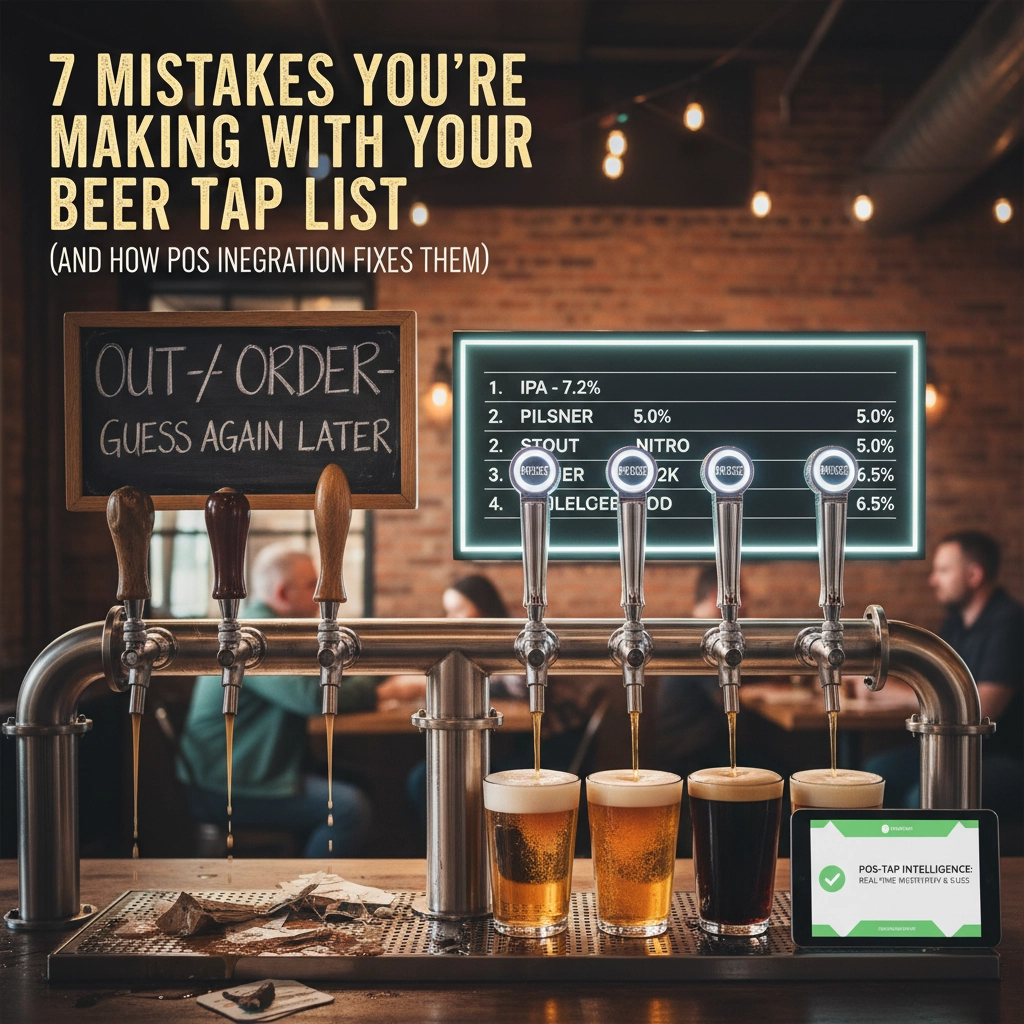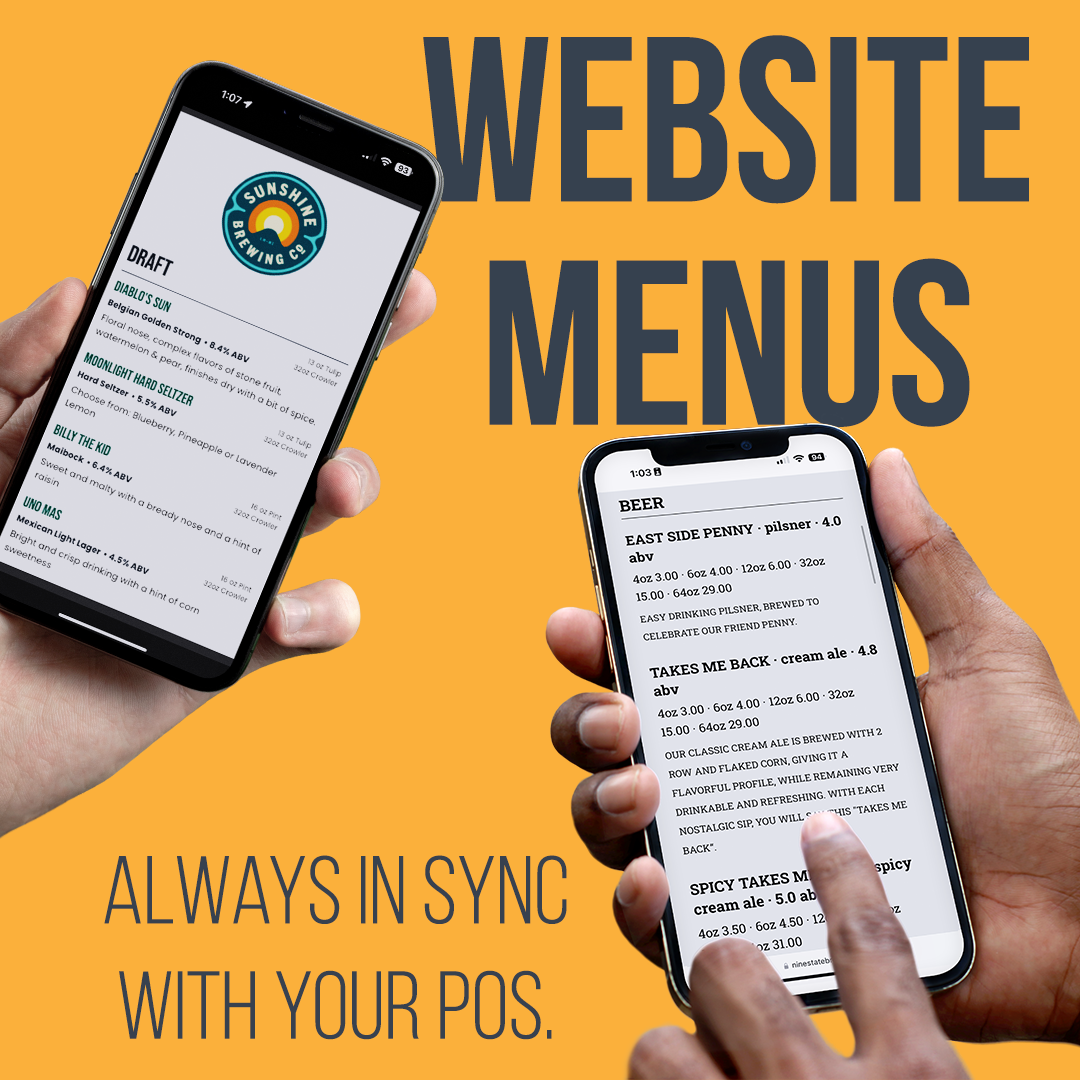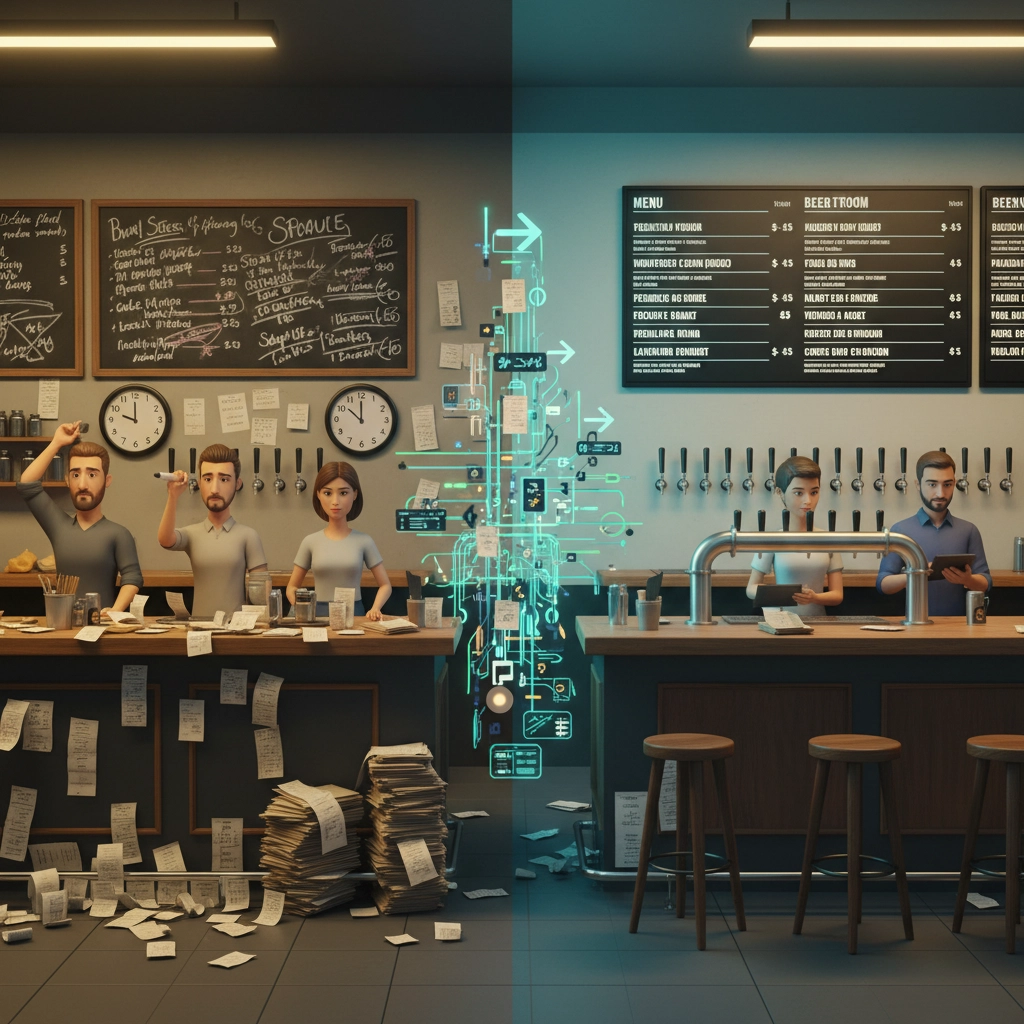7 Mistakes You're Making with Your Beer Tap List (And How POS Integration Fixes Them)

Running a brewery, taproom, or bar means you're juggling dozens of moving parts every single day. But here's the thing: your beer tap list might be working against you instead of for you.
You've probably experienced the frustration: a customer orders their favorite IPA only to discover it kicked an hour ago. Your staff is scrambling to update chalkboards. Your printed menus are already outdated. Sound familiar?
The good news? Most tap list headaches stem from seven common mistakes: and modern POS integration can fix every single one of them. Let's dive into what's going wrong and how to fix it.
Mistake #1: Running Separate Systems That Don't Talk to Each Other
You're updating your inventory in one system, your digital boards in another, and manually crossing items off printed menus. This disconnect creates chaos.
The Problem: When your POS system doesn't communicate with your tap list displays, you're essentially running three different businesses. Staff wastes time updating multiple platforms, customers get frustrated ordering unavailable beers, and you're constantly playing catch-up.
How POS Integration Fixes It: Unified menu management means one update changes everything. When a keg kicks in your POS, that beer automatically disappears from your digital displays, website menus, and printed materials. No more manual updates. No more disappointed customers. Just seamless, real-time accuracy across every touchpoint.

Mistake #2: Flying Blind on Inventory Levels
You're making beer ordering decisions based on gut feelings instead of actual data. This leads to running out of crowd favorites while slow-moving beers take up valuable tap space.
The Problem: Without real-time inventory tracking, you can't see which beers are flying off the taps and which ones are gathering dust. You end up disappointing customers when their go-to beer isn't available, or you're stuck with kegs that expire before they're finished.
How POS Integration Fixes It: Smart inventory tracking shows you exactly what's selling and what isn't. Your integrated system tracks every pour, giving you precise data on consumption rates. You'll know when to reorder your best-sellers and when to rotate slower-moving options. Plus, automatic low-stock alerts ensure you never run out of the beers that drive your revenue.
Mistake #3: Time-Consuming Menu Updates That Slow Everything Down
Every time you want to change a beer, update a price, or add a new arrival, it's a 20-minute process involving multiple platforms and lots of manual work.
The Problem: Traditional menu management eats up valuable time. You're updating chalkboards, reprinting menus, changing digital displays, and hoping you didn't miss anything. Meanwhile, staff productivity suffers and customers wait longer for service.
How POS Integration Fixes It: One-click updates that propagate everywhere instantly. Change a beer's availability in your POS, and it immediately updates on your TV displays, website, printed QR code menus, and staff devices. What used to take 20 minutes now takes 20 seconds. Your team can focus on serving customers instead of managing paperwork.
Mistake #4: Inconsistent Information Across Different Menus
Your chalkboard says one price, your printed menu shows another, and your website has completely different beers listed. This inconsistency frustrates customers and makes your business look unprofessional.
The Problem: Managing multiple menu formats manually guarantees inconsistencies. Prices change, new beers arrive, seasonal offerings rotate out: and keeping everything synchronized becomes nearly impossible. Customers lose trust when they can't rely on your menu information.
How POS Integration Fixes It: Single source of truth for all menu information. Your POS becomes the master database that feeds accurate, up-to-date information to every menu format. Whether customers are looking at your digital display, printed menu, or website, they'll see identical pricing and availability. Consistency builds trust, and trust drives sales.

Mistake #5: Poor Staff Communication About Available Beers
Your servers don't know what's actually available, leading to awkward moments when they have to return to tables with bad news about sold-out selections.
The Problem: In busy environments, communication breaks down. The bartender knows the porter kicked, but the server taking orders doesn't. Customers get frustrated, servers look unprepared, and the overall experience suffers. Staff confidence drops when they can't trust their menu information.
How POS Integration Fixes It: Real-time availability that every team member can access instantly. When your POS integrates with your menu systems, every staff member sees the same real-time information. Servers can confidently take orders knowing exactly what's available. Bartenders can update availability once, and everyone stays informed. Happy staff provide better service, and better service creates loyal customers.
Mistake #6: Missing Sales Data That Could Guide Better Decisions
You're stocking beers based on hunches instead of hard data about what actually drives revenue and customer satisfaction.
The Problem: Without detailed sales analytics, you can't identify your most profitable beers, peak consumption times, or customer preferences. You might be dedicating tap space to beers that barely sell while your actual moneymakers could be expanded. Flying blind leads to missed opportunities and wasted resources.
How POS Integration Fixes It: Comprehensive analytics that reveal your most profitable opportunities. Integrated systems track not just what sells, but when it sells, to whom, and at what profit margins. You'll discover which beers generate the highest tabs, which ones create repeat customers, and which ones deserve more tap space. Data-driven decisions beat guesswork every time.
Mistake #7: Manual Processes That Waste Time and Create Errors
You're still manually tracking inventory, updating menus with markers and paper, and relying on staff memory for what's available. These manual processes are time-consuming and error-prone.
The Problem: Manual systems scale poorly and fail frequently. The bigger you get, the more opportunities for mistakes. Handwritten updates get missed. Verbal communications get forgotten. Staff turnover means constantly retraining people on manual processes. Manual systems are the enemy of consistent growth.
How POS Integration Fixes It: Automated processes that scale with your business. Integrated systems handle routine updates automatically, freeing your team to focus on customer service and business growth. When processes are automated, they're consistent. When they're consistent, your business runs smoother. Automation isn't about replacing people: it's about empowering them to do more valuable work.
The Bottom Line: Integration Isn't Just About Technology
These seven mistakes share a common thread: they all stem from disconnected systems and manual processes that don't scale. POS integration isn't just about having fancy technology: it's about creating a seamless experience for your customers and your team.
When your systems work together, your staff feels confident, your customers trust your information, and you make decisions based on real data instead of assumptions. That's not just good technology: that's good business.
Ready to eliminate these costly mistakes from your operation? Modern POS integration solutions are designed specifically for breweries, taprooms, and bars. They understand your unique challenges and provide tools that actually solve real problems.
Your customers deserve accurate information, your staff deserves reliable tools, and your business deserves systems that help it grow. Stop fighting against manual processes and start working with technology that's on your side.
